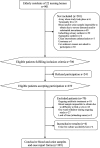Bacteriuria and vitamin D deficiency: a cross sectional study of 385 nursing home residents
- PMID: 31888514
- PMCID: PMC6937784
- DOI: 10.1186/s12877-019-1400-z
Bacteriuria and vitamin D deficiency: a cross sectional study of 385 nursing home residents
Abstract
Background: Up to half of elderly people at nursing homes have asymptomatic bacteriuria, and concentrations of 25-hydroxyvitamin D (25OHD) are generally low. Vitamin D is a modulator of the immune system and involved in protection of the epithelium in the urinary tract as well. The objective was to determine a possible association between bacteriuria and vitamin D deficiency among elderly people at nursing homes.
Methods: Cross-sectional study: Voided urine specimens and blood samples for cultivation and analysis of 25OHD were collected from elderly people at nursing homes in Sweden. Exclusion criteria were: urinary catheter, ongoing antibiotic treatment, incontinence or dementia too severe to provide a voided urine specimen or leave a blood sample, unwillingness to participate or terminal illness. Urine cultures and serum 25OHD concentrations were outcome measures and the association of bacteriuria with vitamin D deficiency was determined by logistic regression.
Results: Twenty-two nursing homes participated and 385 of 901elderly people provided voided urine specimens and blood samples. The mean age was 87 (SD 6.7), 69% women, 19% received vitamin D supplement, 13% had diabetes mellitus, and 54% were diagnosed with dementia. There was significant growth of potentially pathogenic bacteria in 32% (123/385) of voided urine specimens. Escherichia coli were present in 83% of positive urine cultures. The mean concentration of 25OHD in serum was 35 nmol/L (SD 21). Thirty-seven per cent (143/385) had 25OHD < 25 nmol/L, and 3.1% (12/385) 25OHD < 12.5 nmol/L. No association between bacteriuria and 25OHD < 25 nmol/L, OR 1.4 (0.86-2.3; p = 0.18) adjusted for age, gender, diabetes mellitus and dementia was found. However, if using 25OHD < 12.5 nmol/L as a cut-off for vitamin D deficiency the adjusted odds-ratio was 4.4 (1.1-17; p = 0.031).
Conclusions: Bacteriuria and vitamin D deficiency was common. No association between bacteriuria and 25OHD < 25 nmol/L was found. If using 25OHD < 12.5 nmol/L as cut-off for vitamin D deficiency there was an association. However, this has to be interpreted with caution as causality cannot be evaluated as well as only few residents had 25OHD < 12.5 nmol/L.
Keywords: Bacteriuria; Frail elderly; Homes for the aged; Nursing homes; Urinary tract infections; Vitamin D.
Conflict of interest statement
The authors declare no competing interests.
Comment in
-
Re: Bacteriuria and Vitamin D Deficiency: A Cross Sectional Study of 385 Nursing Home Residents.J Urol. 2020 Sep;204(3):595. doi: 10.1097/JU.0000000000001163.02. Epub 2020 Jun 30. J Urol. 2020. PMID: 32603267 No abstract available.
Similar articles
-
Vitamin D deficiency was common among nursing home residents and associated with dementia: a cross sectional study of 545 Swedish nursing home residents.BMC Geriatr. 2017 Oct 10;17(1):229. doi: 10.1186/s12877-017-0622-1. BMC Geriatr. 2017. PMID: 29017462 Free PMC article.
-
Interleukin-6 concentrations in the urine and dipstick analyses were related to bacteriuria but not symptoms in the elderly: a cross sectional study of 421 nursing home residents.BMC Geriatr. 2014 Aug 12;14:88. doi: 10.1186/1471-2318-14-88. BMC Geriatr. 2014. PMID: 25117748 Free PMC article.
-
Factors associated with serum 25-hydroxyvitamin D concentrations in older people in Europe: the EUREYE study.Eur J Clin Nutr. 2019 Feb;73(2):319-328. doi: 10.1038/s41430-018-0353-1. Epub 2018 Oct 26. Eur J Clin Nutr. 2019. PMID: 30367156
-
Serum 25-hydroxyvitamin D threshold and risk of rickets in young children: a systematic review and individual participant data meta-analysis to inform the development of dietary requirements for vitamin D.Eur J Nutr. 2024 Apr;63(3):673-695. doi: 10.1007/s00394-023-03299-2. Epub 2024 Jan 27. Eur J Nutr. 2024. PMID: 38280944 Free PMC article. Review.
-
Questioning vitamin D status of elderly fallers and nonfallers: a meta-analysis to address a 'forgotten step'.J Intern Med. 2015 Jan;277(1):16-44. doi: 10.1111/joim.12250. Epub 2014 May 23. J Intern Med. 2015. PMID: 24697944 Review.
Cited by
-
Systematic Review of Literature Examining Bacterial Urinary Tract Infections in Diabetes.J Diabetes Res. 2022 May 17;2022:3588297. doi: 10.1155/2022/3588297. eCollection 2022. J Diabetes Res. 2022. PMID: 35620571 Free PMC article. Review.
-
Lower serum levels of vitamin D in adults with urinary tract infection.Infection. 2022 Jun;50(3):739-746. doi: 10.1007/s15010-021-01750-2. Epub 2022 Jan 10. Infection. 2022. PMID: 35013942
-
Vitamin D Status and Its Role in First-Time and Recurrent Urinary Tract Infections in Children: A Case-Control Study.Children (Basel). 2021 May 20;8(5):419. doi: 10.3390/children8050419. Children (Basel). 2021. PMID: 34065169 Free PMC article.
-
Vitamin D Deficiency is Associated with Handgrip Strength, Nutritional Status and T2DM in Community-Dwelling Older Mexican Women: A Cross-Sectional Study.Nutrients. 2021 Feb 26;13(3):736. doi: 10.3390/nu13030736. Nutrients. 2021. PMID: 33652581 Free PMC article.
References
Publication types
MeSH terms
Substances
LinkOut - more resources
Full Text Sources
Medical



